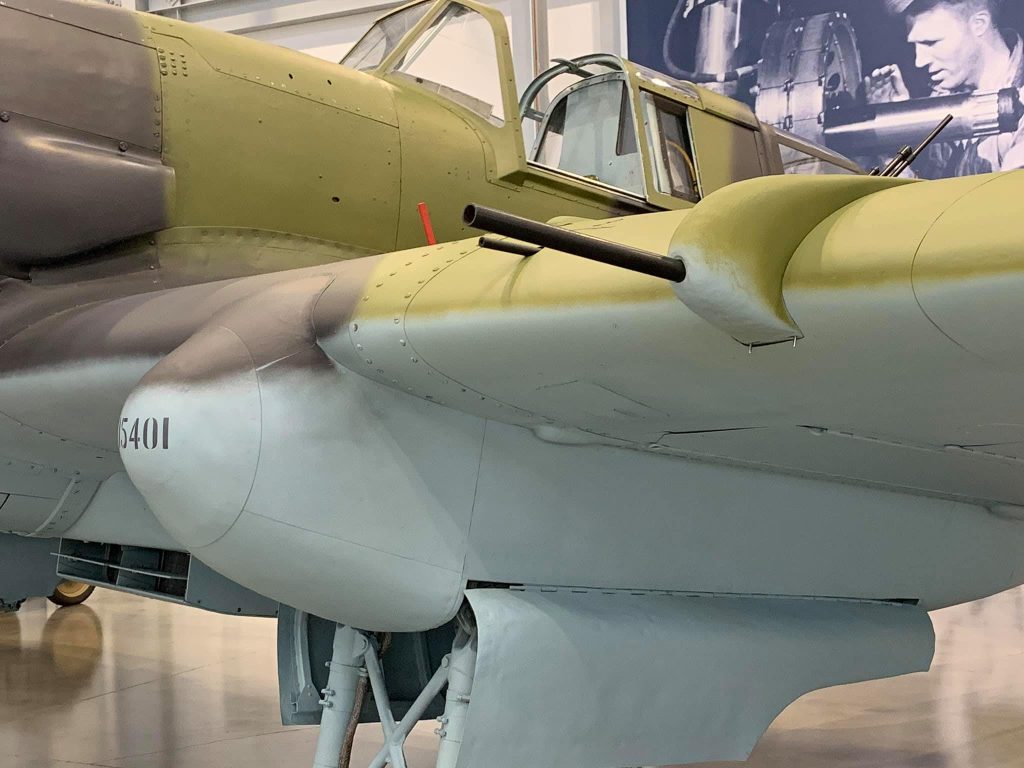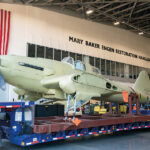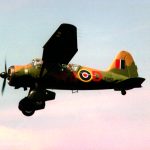By Randy Malmstrom
Since his childhood, Randy Malmstrom has had a passion for aviation history and historic military aircraft in particular. He has a particular penchant for documenting specific airframes with a highly detailed series of walk-around images and an in-depth exploration of their history, which have proved to be popular with many of those who have seen them, and we thought our readers would be equally fascinated too. This installment of Randy’s Warbird Profiles takes a look at the Flying Heritage & Combat Armor Museum’s Ilyushin Il-2 Shturmovik.

Ilyushin Il-2M3 Shturmovik (Ильюшин Ил-2 or Il-2 Type 3), s/n 305401, N112VW. Roughly 60 percent of this particular rebuilt aircraft is made up of Il-2 serial number 305401 which was built in Kuybyshev (present-day Samara) on the Volga River in mid-1943 (Kuybyshev was a center for Il-2 production and was to be the new USSR capital in the event Moscow fell to the Germans).

That aircraft was assigned to the 828th Aviation Attack Regiment of the 260th Composite Air Division on the lower Karelian Front, and as a unit of the Soviet Seventh Army, it flew combat missions for over a year. There are few if any specific details of its activities during that time, but it likely participated in the Svir-Petrozavodsk Offensive during the summer of 1944.
On October 10, 1944, it was shot down by anti-aircraft fire while attacking an airfield during the Petsamo-Kirkenes Offensive in northern Finland and Norway and crashed near the Titovka River. It was found by helicopter in 1991 with more than a dozen shrapnel and bullet holes.

Parts from Il-2 serial number 4283 were also used to rebuild this aircraft and it is believed to have been intentionally crashed into a German anti-aircraft battery on February 12, 1944. Another parts donor to this plane was Il-2 serial number 7593 which was shot down by anti-aircraft fire on January 12, 1944. The remaining original parts came from an Il-2 that was shot down near Alushkovo (near Smolensk) on February 1, 1944. Newly-built parts of birch and pine made from Finnish plywood were incorporated into the reconstruction. It is a later, 2-seat version and with a swept-back wing design (compared to the earlier straight-wing design).

It was rebuilt over a 6-year period largely by Retro Avia Tech, Ltd. in Novosibirsk, Russia in the 2000’s (further work was needed upon arrival in the U.S.) using a left-cranking Allison V-1710-113 engine and a propeller from the left nacelle of a P-38 Lightning – the original Mikulin AM-38 engine was also left-cranking. An authentic Mikulin AM-38F engine was found but various issues kept it from being used.

It is painted in the markings of the Soviet 298th Air Division, 198th Aviation Attack Regiment in honor of twice-decorated Air Marshal Alexander Efimov, Hero of the Soviet Union (Efimov was known for flying 288 combat missions, destroying 126 German tanks, and for boldly engaging German aircraft in his ground-attack Il-2, destroying seven; he died in Moscow in 2012).

This rebuilt aircraft first flew in September 2011, and flew during a parade in Samara, Russia on November 7, 2011 (in fact, some visitors to this aircraft who were at that event have come to see this aircraft in the U.S. and stated they saw another Il-2 in Russia – it being one in the same aircraft, however).

In 2012, the aircraft was acquired by Paul Allen’s Vulcan Warbirds Inc. for display and flying at Flying Heritage & Combat Armor Museum (FHCAM) on Paine Field in Everett, Washington, and was first flown in the U.S. by Steve Hinton on August 9, 2012 (I understand he reports it is a bit unstable and requires a constant hands-on approach to flying); it is now registered under Wartime History Museum, the new FHCAM owner. As of this writing, this is one of two airworthy Il-2 aircraft – one in Russia – and the Udvar-Hazy Center of the Smithsonian in Virginia is rebuilding one, as reported by Vintage Aviation News.

About the author

































